Demolition Contractors Salem
Best Demolition Company Near Me in Salem
Receive multiple Demolition Contractor quotes for your project today! Compare profiles, reviews, accreditations, portfolio, etc... and choose the best service.

Shed Horn Excavation Inc.
4.69 reviewsSalem, USAbout Shed Horn Excavation Shed Horn Excavation is a small family owned company started in 2021 by owner Casey Hoff. Casey has a background in a wide array of construction industries and also holds a bachelors degree in Construction Engineering Management from Oregon State University. With these skills Casey has teamed up with a great group of people to create his own company doing what he loves. What We Do The sky is the limit at Shed Horn Excavation, we are capable and willing to tackle many types of projects from large excavation projects to small paver patios. With a growing fleet of equipment and an eager group of people we have endless options and potential to complete your project. Serving the majority of the Willamette Valley from Salem down to Eugene and even to the Oregon coast.
- Services
- Why Us?
- Accreditations
- Our Team
- Gallery
Get Quote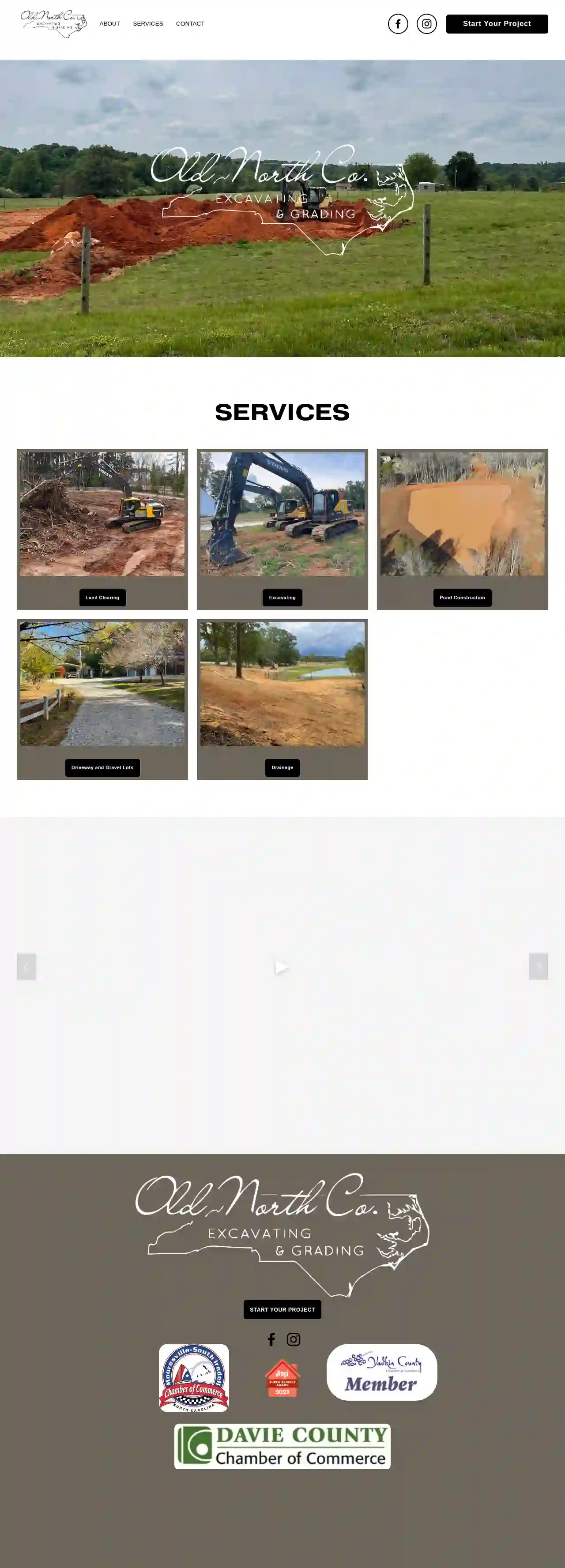
Old North Company Excavating & Grading
56 reviewsYadkinville, 27055, USOld North Company: Your Trusted Partner for Land Development Old North Company is your premier choice for professional excavating and land grading services across North Carolina. We are committed to excellence and specialize in delivering top-notch solutions tailored to meet your project's needs. Whether you're embarking on a residential, commercial, or an industrial project, count on us to provide reliable, efficient, and cost-effective services to ensure your success. With a commitment to quality, efficiency, and customer satisfaction, Old North Company is your trusted partner for all your land development needs.
- Services
- Why Us?
- Gallery
Get Quote
Hardscape Concepts Inc
559 reviewsSalem, USExpect More From Your Outdoors Locally owned and operated, serving the Triad since 1998. Providing planning, building, repair and maintenance of your home’s landscaping and hardscaping needs with courteous and competent staff. Taking your project from bare ground to eye-catching beauty. Specializing in residential hardscape and landscape design and installation. Call us today for a FREE estimate—336.788.7379
- Services
- Why Us?
- Gallery
Get Quote
Overland Grading & Sitework, LLC
4.523 reviews123 Main Street, Los Angeles, 91201, USOverland Grading: Your Trusted Partner for Excavation and Grading Services Overland Grading is a reputable and experienced excavation and grading company serving the [CITY] area. We are committed to providing high-quality services with a focus on safety, efficiency, and customer satisfaction. Our team of skilled professionals has a proven track record of delivering exceptional results on a wide range of projects, from residential and commercial developments to infrastructure projects. We understand that every project is unique, and we take a personalized approach to ensure that your specific needs are met. Our services include: Site preparation Excavation Grading Utility installation Demolition And more At Overland Grading, we are dedicated to building strong relationships with our clients. We believe in open communication, transparency, and delivering projects on time and within budget. Contact us today to discuss your project and learn how we can help you achieve your goals.
- Services
- Why Us?
Get Quote
Western Construction Systems LLC
4.770 reviewsSalem, USFOUNDATION AND WATERPROOFING SPECIALISTS Serving the Portland Metro Area, Willamette Valley and the Oregon Central Coast Range Protect Your Property with Expert Foundation & Waterproofing Solutions At Western Construction Systems, we understand the value of keeping your property safe and secure. Our dedicated team of professionals are well-versed in various services such as foundation repair, concrete restoration, waterproofing solutions, and more. We take pride in our ability to provide top-notch services that are specifically tailored to meet the needs of homeowners and commercial property owners in the Portland Metro Area and other surrounding areas along the Willamette Valley and Oregon Coastal Range. At Western Construction Systems, we pride ourselves on offering a comprehensive range of services to meet all your foundation and waterproofing needs. Our expert team is equipped to handle everything from Foundation repairs to Drainage Solutions. At Western Construction Systems, we're not selling a product, we're selling solutions. As foundation and waterproofing specialists, we know that the Pacific Northwest weather can be hard on your property and we understand the importance of protecting and repairing your property to give you security and peace of mind.We value your satisfaction and meeting your needs by offering the highest level of service, quality products and competitive pricing.We are committed to making a positive impact in our community and strive to exceed your expectations with every project we undertake. Whether you're a homeowner, business owner, realtor or property manager, you can trust Western Construction Systems to deliver superior solutions tailored to your specific needs. When you choose Western Construction Systems as your foundation and waterproofing specialists, you can expect: Veteran-Owned: As a veteran-owned company, we bring a level of dedication and attention to detail that sets us apart. Expertise: Our team consists of highly trained professionals with years of experience in foundation repair and structural services. Tailored Solutions: We understand that every project is unique. That's why we work closely with our clients to develop customized solutions that meet their needs. Quality Materials: We use only the highest quality materials and state-of-the-art equipment to ensure the longevity and effectiveness of our solutions. Customer Satisfaction: Your satisfaction is our top priority. We work closely with you throughout the process to ensure that your expectations are met and exceeded. Competitive Pricing: We believe that quality structural services should be accessible to everyone. That's why we offer competitive pricing without compromising on the quality of our work.
- Services
- Why Us?
- Testimonials
- Gallery
Get Quote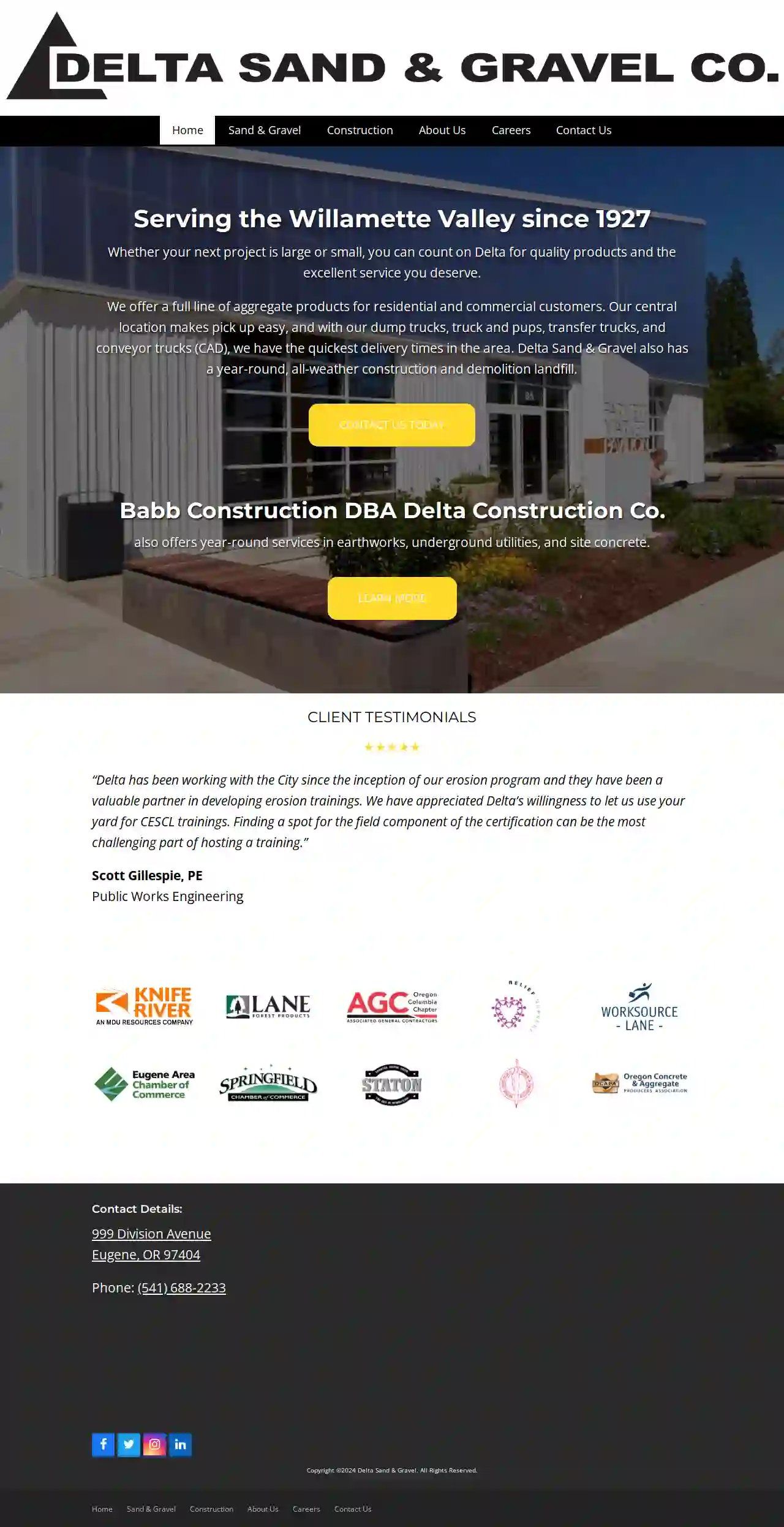
Delta Sand & Gravel
4.3127 reviewsSalem, US- Services
- Why Us?
Get Quote
Largent Land Management
512 reviewsSalem, USLargent Land Management: Your Trusted Partner for Land Management Services Since 2015, Largent Land Management has been serving the Advance, Highpoint, Winston-Salem, and Greensboro areas of North Carolina, providing comprehensive land management solutions for both commercial and residential properties. We are committed to delivering exceptional service and exceeding our clients' expectations with every project. Our team of experienced professionals is dedicated to providing personalized attention and expert guidance throughout the entire process. We understand that your land is a valuable asset, and we treat it with the utmost care and respect. Whether you need site work, land clearing, grading and excavation, watershed and erosion control, septic system installation, or demolition, we have the expertise and resources to handle your project efficiently and effectively. We pride ourselves on our open communication and commitment to keeping our clients informed every step of the way. We believe in building strong relationships with our clients, and we are dedicated to providing them with the best possible experience. Contact us today for a free quote and let us help you achieve your land management goals.
- Services
- Why Us?
- Testimonials
- Gallery
Get Quote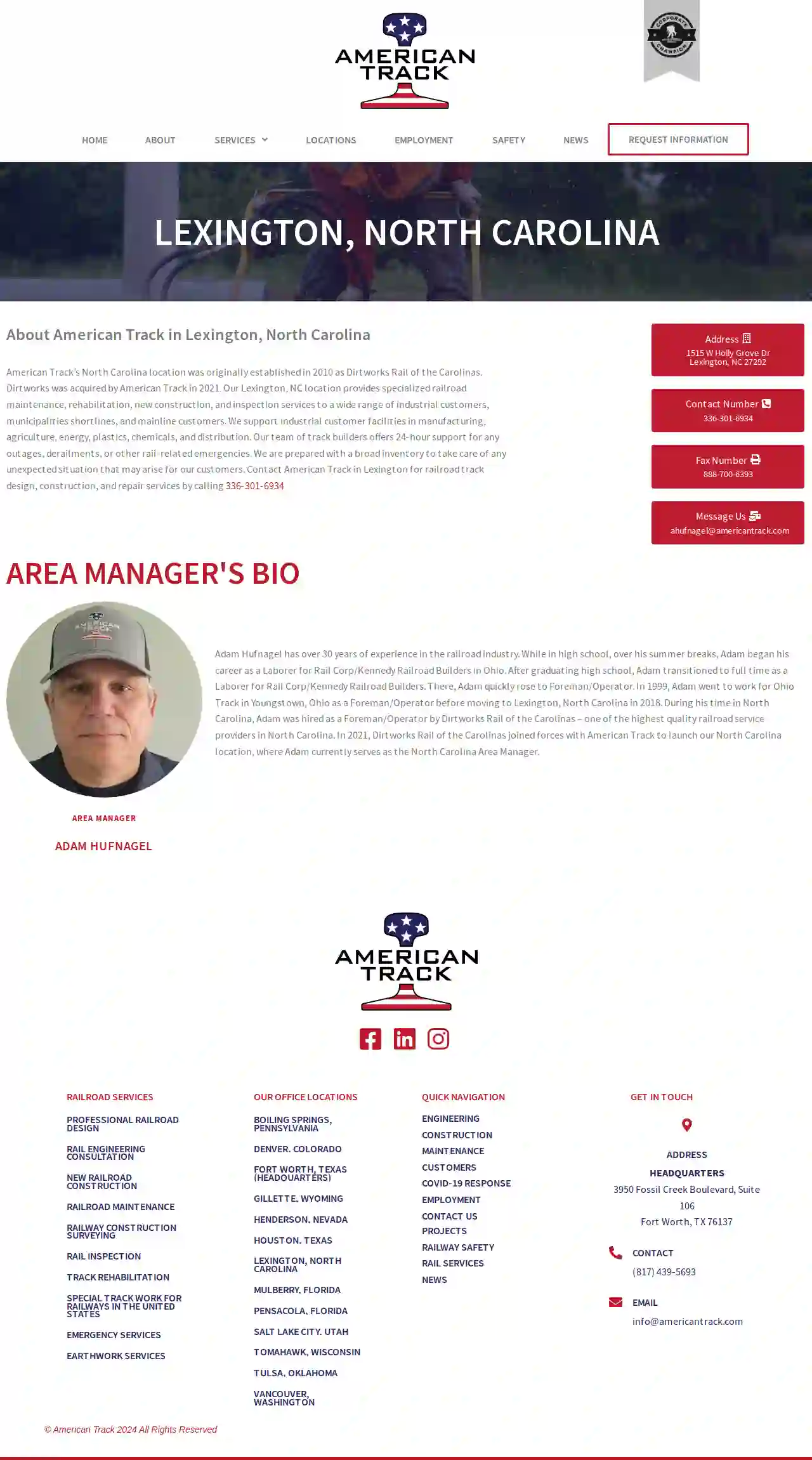
Dirtworks of the Carolinas
4.52 reviews1515 W Holly Grove Dr, Lexington, 27292, USAbout American Track in Lexington, North Carolina American Track’s North Carolina location was originally established in 2010 as Dirtworks Rail of the Carolinas. Dirtworks was acquired by American Track in 2021. Our Lexington, NC location provides specialized railroad maintenance, rehabilitation, new construction, and inspection services to a wide range of industrial customers, municipalities shortlines, and mainline customers. We support industrial customer facilities in manufacturing, agriculture, energy, plastics, chemicals, and distribution. Our team of track builders offers 24-hour support for any outages, derailments, or other rail-related emergencies. We are prepared with a broad inventory to take care of any unexpected situation that may arise for our customers. Area Manager's Bio Adam Hufnagel has over 30 years of experience in the railroad industry. While in high school, over his summer breaks, Adam began his career as a Laborer for Rail Corp/Kennedy Railroad Builders in Ohio. After graduating high school, Adam transitioned to full time as a Laborer for Rail Corp/Kennedy Railroad Builders. There, Adam quickly rose to Foreman/Operator. In 1999, Adam went to work for Ohio Track in Youngstown, Ohio as a Foreman/Operator before moving to Lexington, North Carolina in 2018. During his time in North Carolina, Adam was hired as a Foreman/Operator by Dirtworks Rail of the Carolinas – one of the highest quality railroad service providers in North Carolina. In 2021, Dirtworks Rail of the Carolinas joined forces with American Track to launch our North Carolina location, where Adam currently serves as the North Carolina Area Manager.
- Services
- Why Us?
- Our Team
- Gallery
Get Quote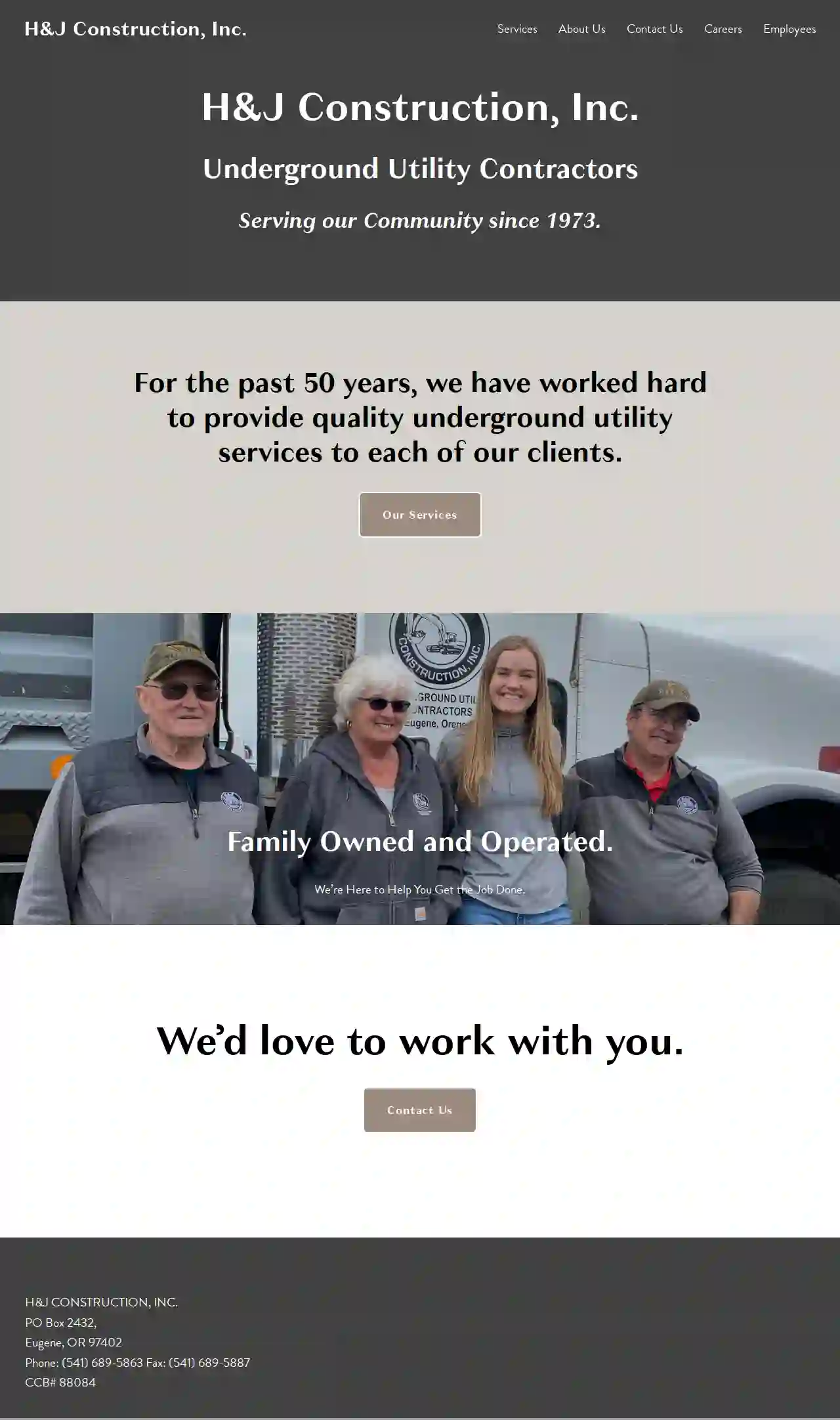
H&J Construction, Inc.
4.37 reviewsSalem, US- Services
- Why Us?
Get Quote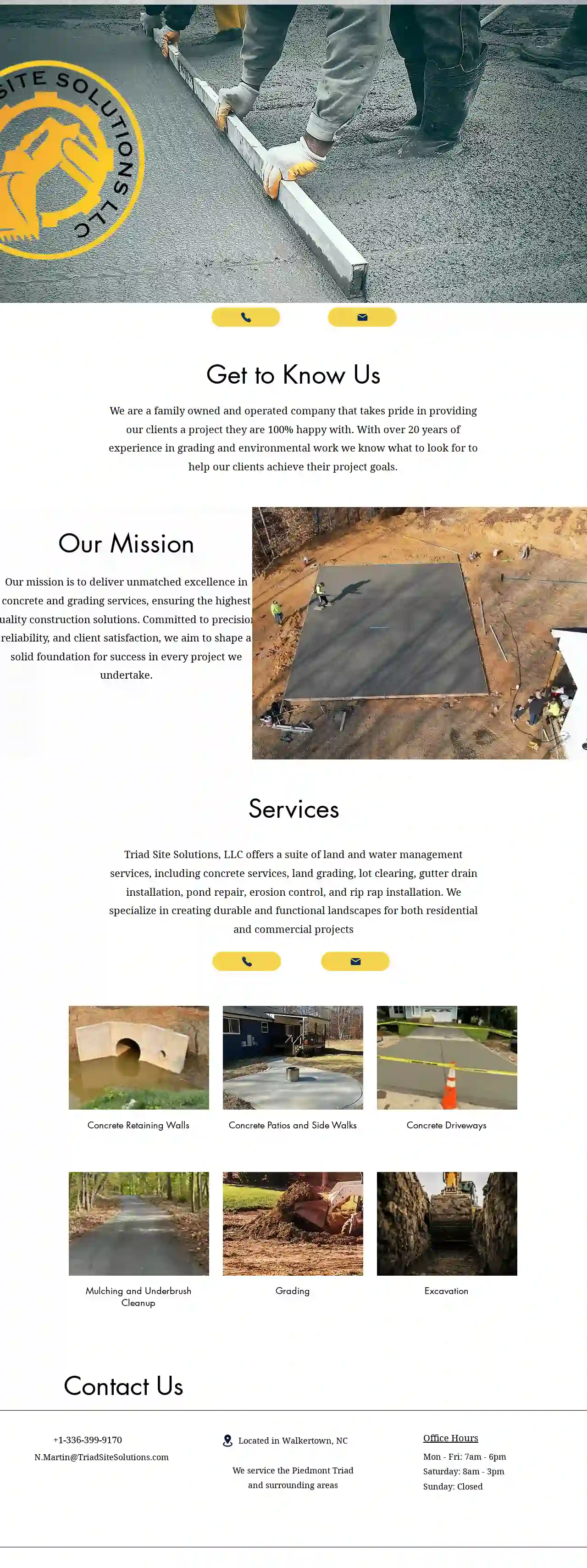
Triad Site Solutions LLC
54 reviewsWalkertown, USWe are a family owned and operated company that takes pride in providing our clients a project they are 100% happy with. With over 20 years of experience in grading and environmental work we know what to look for to help our clients achieve their project goals. Our mission is to deliver unmatched excellence in concrete and grading services, ensuring the highest quality construction solutions. Committed to precision, reliability, and client satisfaction, we aim to shape a solid foundation for success in every project we undertake.
- Services
- Why Us?
- Gallery
Get Quote
Over 3,943+ Excavation Businesses in our network
Our excavation contractors operate in Salem & beyond!
ExcavationHQ has curated and vetted the Best Excavation Pros in Salem. Find a trustworthy contractor today.
Frequently Asked Questions About Demolition Contractors
- Enclosure: Sealing off the asbestos-containing material to prevent fiber release.
- Encapsulation: Coating the asbestos-containing material with a sealant to bind the fibers.
- Removal: Carefully removing the asbestos-containing material and disposing of it safely.
- Clear the Site: Remove all furniture, appliances, personal belongings, and any valuable items from the structure.
- Secure the Perimeter: Fence off the demolition area to prevent unauthorized access and protect surrounding property.
- Disconnect Utilities: Arrange for the disconnection of electricity, gas, water, and other utilities servicing the building.
- Hazardous Material Abatement: If asbestos, lead paint, or other hazardous materials are present, have them professionally removed before demolition begins.
- Notify Neighbors: Inform your neighbors about the demolition schedule to minimize disruptions and address any concerns.
- Obtain Permits: Ensure all necessary demolition permits are in place before starting work.
- Waste Generation: Demolition generates a large volume of debris, contributing to landfill space and potentially releasing harmful substances into the environment if not disposed of properly.
- Air Pollution: Dust and particulate matter released during demolition can impact air quality, affecting human health and the environment.
- Noise Pollution: Demolition activities can generate significant noise, disturbing nearby residents and wildlife.
- Resource Depletion: Demolition consumes resources that could be salvaged and reused, contributing to resource depletion and environmental degradation.
What are the different methods of asbestos abatement?
How do I prepare my property for demolition?
How can I tell if my building contains asbestos?
What are the environmental impacts of demolition?
What are the different methods of asbestos abatement?
- Enclosure: Sealing off the asbestos-containing material to prevent fiber release.
- Encapsulation: Coating the asbestos-containing material with a sealant to bind the fibers.
- Removal: Carefully removing the asbestos-containing material and disposing of it safely.
How do I prepare my property for demolition?
- Clear the Site: Remove all furniture, appliances, personal belongings, and any valuable items from the structure.
- Secure the Perimeter: Fence off the demolition area to prevent unauthorized access and protect surrounding property.
- Disconnect Utilities: Arrange for the disconnection of electricity, gas, water, and other utilities servicing the building.
- Hazardous Material Abatement: If asbestos, lead paint, or other hazardous materials are present, have them professionally removed before demolition begins.
- Notify Neighbors: Inform your neighbors about the demolition schedule to minimize disruptions and address any concerns.
- Obtain Permits: Ensure all necessary demolition permits are in place before starting work.
How can I tell if my building contains asbestos?
What are the environmental impacts of demolition?
- Waste Generation: Demolition generates a large volume of debris, contributing to landfill space and potentially releasing harmful substances into the environment if not disposed of properly.
- Air Pollution: Dust and particulate matter released during demolition can impact air quality, affecting human health and the environment.
- Noise Pollution: Demolition activities can generate significant noise, disturbing nearby residents and wildlife.
- Resource Depletion: Demolition consumes resources that could be salvaged and reused, contributing to resource depletion and environmental degradation.